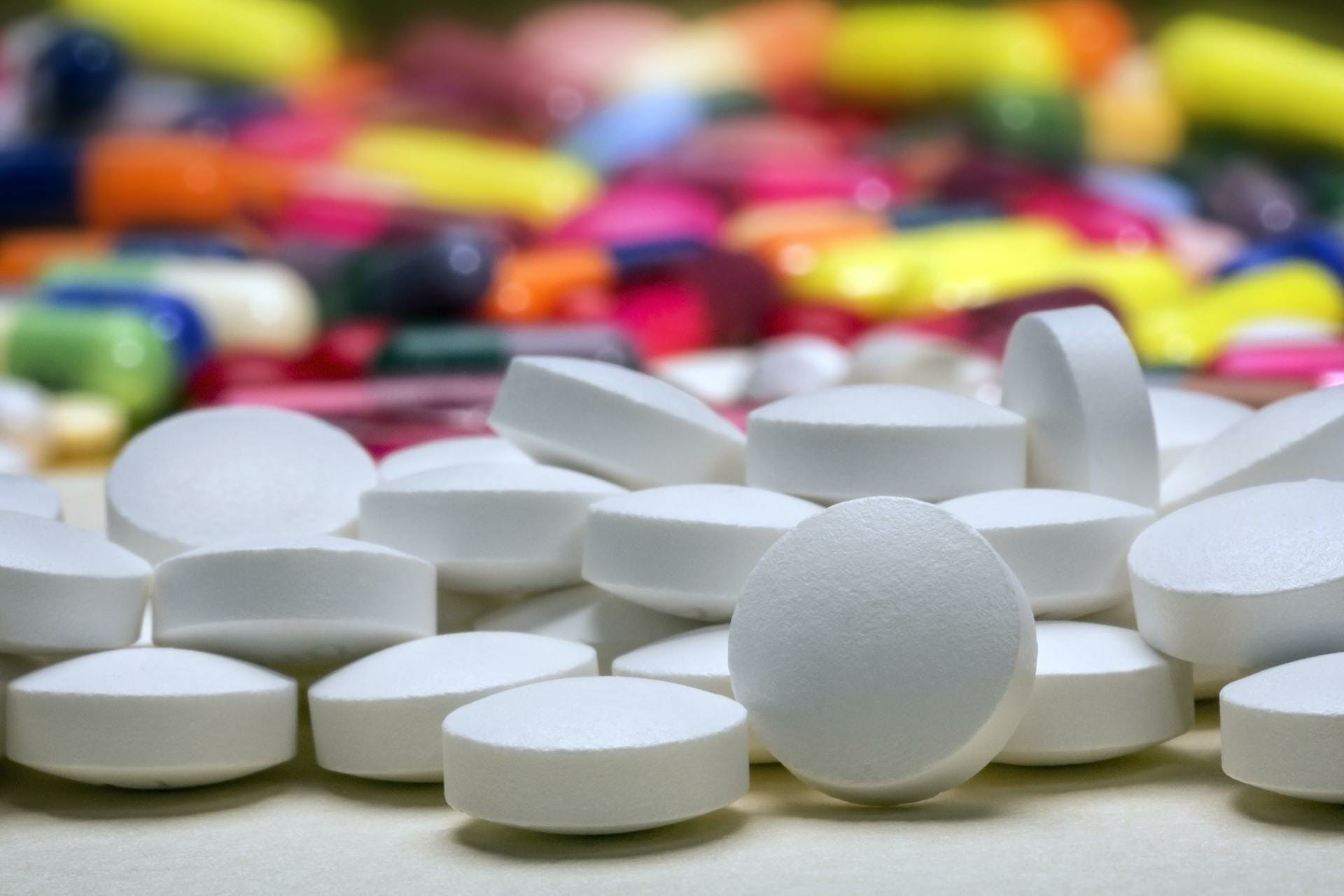The question of how long MDMA lasts in a person’s body depends on a broad range of factors that are unique to the individual taking the drug. The chemical composition, dosage, and route of administration of the drug itself are also crucial factors that affect how long the drug stays in a person’s system. Ultimately, however, how long MDMA lasts in a person’s system is a difficult question, because even when the effects of MDMA have faded away the drug continues to have long term impacts on a person’s health, life, and mental state.

On This Page:
What is MDMA?
MDMA stands for 3,4-methylenedioxy-methamphetamine. It is a synthetic drug that affects perception and mood. MDMA is in many respects similar to stimulants, including prescription stimulants like Adderall and Vyvanse, because it increases a person’s energy sense of focus on the present moment. MDMA is also similar to hallucinogens like psilocybin mushrooms and LSD, because it distorts a person’s sense of time, their sensory perceptions, and increases feelings of emotional warmth. Ultimately, the main experience people report when taking MDMA is a sense of warm connection to others and strong feelings of pleasure.
MDMA was first synthesized in 1912 and began to be used recreationally by the 1970s. It was initially circulated among psychotherapists, psychiatrists, fans of psychedelics, and yuppies who believed that it put users back into a state of happy innocence. These users often referred to the drug as “Adam.” By the 1980s, however, the amount of people abusing MDMA had increased many times over. It became a popular drug in the club scene, with “ecstasy parties” becoming common occurrences in bars, clubs, and discos. Many cocaine dealers at the time switched to selling MDMA due to the drug’s popularity. By the 1990s, MDMA had become even more mainstream and received significant media attention when it spread to the United States’ college campuses. Today the DEA classifies MDMA as a Schedule I drug, meaning it is considered a dangerous drug of abuse with no recognized medical uses.
Nonetheless, MDMA remains popular among recreational drug users today. The drug often goes by a number of different names, including ecstasy, extasy, E, molly, and X. It is important to note that these alternative names often refer to pills that include MDMA combined with other substances, including opiates and amphetamines. MDMA is enormously popular among people who abuse other substances. As such, it is often used in the contest of polysubstance abuse. Abusing MDMA alongside other substances is not only more dangerous, but it complicates the long term effects. Individuals taking MDMA alongside other substances are also likely to have MDMA remain in their systems for longer than those who abuse MDMA exclusively.
How Long Does Ecstasy Last?
The short term effects of MDMA last approximately 3 to 6 hours after a person takes the drug. However, it is important to note that it is common for users to take a second dose as soon as the effects of the first dose begin to wear off. Some people even take third or fourth doses to ensure a continuous MDMA high. As such, the length of an MDMA high is very much determined by the actual behavior of the person taking the drug. Individuals who are taking MDMA at a “molly party” or at a dance club are likely to take multiple doses because they are seeking a specific experience.
When a person takes MDMA to get high, they will experience a number of effects for the next few hours. These signs and symptoms of MDMA abuse include:
- Increased extroversion and desire to engage with and communicate with other people
- Enhanced sense of well-being
- Increased empathy toward others
- Feelings of emotional warmth
- A willingness to discuss emotionally-charged memories
- The feeling that one’s sensory perception has been enhanced
After 3 to 6 hours, these effects begin to fade and people begin to experience MDMA withdrawal effects. The side effects of MDMA withdrawal are, in many ways, the polar opposite of the drug’s intended short term effects. A few hours after taking a dose of MDMA, users are likely to experience the following MDMA withdrawal symptoms:
- Feelings of depression
- Acute anxiety
- Memory and attention problems
- Irritability
- Aggression and impulsiveness
- Sleep problems
- Decreased interest in and pleasure from sex
- Decreased appetite
- A strong desire to isolate from other people
When MDMA is combined with other substances, these withdrawal effects are often more severe. They also are more likely to include other symptoms as well, some of which can be life-threatening, especially when MDMA is combined with alcohol or benzodiazepines.
How Do People Take MDMA
Determining how long MDMA stays in a person’s system is complicated by the fact that people can take the drug many different ways. It is most commonly sold in the form of a capsule or tablet. However, it is also common for people to ingest it in liquid form. Other people snort pure MDMA powder. Many individuals crush their MDMA pills and snort them in order to experience results more quickly. The term “Molly,” which is often used to refer to MDMA in general, is sometimes used to refer to a specific formulation of MDMA: the “pure” crystalline powder form of MDMA. While this powdered form of MDMA is often expected to be more pure, and it often does indeed have more powerful effects, the potency of Molly is often due to the fact that it is actually contaminated with adulterants and other recreational drugs, such as synthetic cathinones, also known as bath salts. People who abuse MDMA vary considerably in the doses they take. A typical dose of MDMA is often between 50 to 160 milligrams (mg). However, individuals who dose themselves multiple times in one evening are likely to have the drug remain in their body for much longer. Additionally, other substances that are often combined with MDMA can slow or speed up the body’s ability to metabolize the substances.
How Long is MDMA Detectable via Drug Testing?
There are a number of different drug tests that can be used to measure the presence of MDMA, ecstasy, or molly in a person’s body. Each drug testing method has its own unique advantages and disadvantages. Some are more accurate than others. Certain tests are able to measure MDMA usage over a long period of time, while others have shorter detection windows. Ultimately, however, the important fact is that MDMA is indeed detectable via drug testing.
How Long is Ecstasy Detectable in Urine?
MDMA can be detected in urine up to three days after a person consumes the drug. After using MDMA, the chemical compounds of the drug enter the bloodstream and are carried over to the person’s liver. There, the compounds are broken down and ultimately excreted from the system, primarily through urine. However, this process takes some time to begin. It can take several hours before Molly is detectable in urine. It has to be processed and broken down by the liver first.
There have been a number of studies recently that show that the pH of a person’s urine is an important factor that determines how long ecstasy can be detected in their urine. Individuals who have very alkaline urine (higher pH urine) tend to have slower urine excretion rates, and hence MDMA can be detected in their urine for longer periods of time.
How Long is Ecstasy Detectable in Blood?
The detection window for MDMA in blood is a bit smaller than it is for urine. MDMA can only be detected in blood between one and two days after it is consumed. However, it is detectable in blood almost right away and requires less processing time. After 15-30 minutes of ecstasy abuse, MDMA can be detected in a person’s blood. However, it is quickly transported to the liver, after which point blood tests often fail to detect the presence of MDMA.
How Long is Ecstasy Detectable in Saliva?
Saliva tests are a bit less reliable than blood and urine tests, because the peak concentration of MDMA in saliva occurs between one and three hours after a person uses MDMA. After this, the drug becomes more difficult to detect. Nonetheless, traces of MDMA can often be found in people’s saliva up to two days after they abuse the drug. Saliva tests remain one of the less reliable ways of detecting MDMA.
How Long is Ecstasy Detectable in Hair?
Hair tests are the most reliable drug testing method for detecting the presence of MDMA in a person’s system. Hair tests can reliably detect MDMA in a person’s hair for months after a person has used the drug — even if they only used it once. The reason why hair tests work is because once MDMA is in the bloodstream, small traces of the drug are transported to the small blood vessels that feed the hair follicles. As a result, small traces of MDMA (as well as other drugs) end up in the hair. Most people experience hair growth of approximately 1 centimeter every month, so the length of a person’s hair determines how long MDMA can be detected. The specific segment of hair that tests positive can also indicate how long ago a person consumed MDMA.
Long-Term Health Effects of MDMA
Most people who abuse MDMA do so regularly. When MDMA abuse is incorporated into a person’s lifestyle, the result is that MDMA is always in their system. Even individuals who are not experiencing the immediate effects of MDMA are likely to be experiencing the adverse withdrawal effects of the drug. With most drugs, the withdrawal effects can be cured or mitigated by immediately taking another dosage of the drug. However, MDMA is unique in that the chemical byproducts of the drug interfere with the body’s ability to metabolize MDMA. This means that regular MDMA users need to wait for their bodies to recover before they can abuse the drug again.
During this wait time, it is common for recreational drug users to abuse other substances, including prescription stimulants, alcohol, and opioids. As such, it is crucial to recognize that even when MDMA is no longer physically present in a person’s system, it often remains a driving force for dangerous substance abuse-related behaviors, especially for individuals with polysubstance addiction.
Individuals who abuse MDMA regularly are likely to suffer a broad range of cognitive, emotional, and physical issues, many of which are permanent in nature. Studies have shown that long term usage of MDMA are more likely to develop irregular heartbeats (arrhythmia) and heart damage in general. Emotional issues, cognitive problems, and mental health conditions also become more likely. Dangers associated with long term MDMA usage include:
- Depression
- Anxiety
- Impaired attention
- Impaired memory
- Irritability
- Aggression
- Sleep disturbances
- Lack of appetite
The behavioral changes that occur when people abuse MDMA can also be life changing. MDMA can cause people to be less inhibited and more open to risky social interactions. Most notably, these interactions include risky sexual behaviors. Studies have shown that both males and females who abuse MDMA are far more likely to engage in risky sexual behaviors, which range from having unprotected sex to sexual assault. The result can be trauma, pregnancy, and a higher likelihood of contracting a sexually transmitted infection (STI).
Can You Overdose on MDMA?
MDMA by itself rarely leads to life threatening overdoses. However, that does not mean that MDMA abuse cannot be fatal. In fact, MDMA often does lead to acute adverse health effects. When people take too high a dosage, they can experience high blood pressure (hypertension), faintness, panic attacks, and even loss of consciousness and seizures. For individuals who are already in poor health, these effects can be potentially life threatening.
The indirect effects of MDMA are often the greatest cause for concern. MDMA acts in many ways like a stimulant, giving people enormous quantities of energy and drive. It is often used in clubs and dance venues, where people engage in intense physical activity for extended periods of time — often in warm environments. One of the most significant dangers of MDMA abuse is the possibility of hyperthermia, the clinical term for dangerously high body temperature. In fact, MDMA itself makes it more difficult for the body to regulate its own body temperature. When hyperthermia occurs, muscles begin to break down rapidly, electrolytes become unbalanced, and kidney failure or deadly swelling of the brain can occur. Individuals who drink plenty of liquids to compensate for their intense physical activity on MDMA actually increase the likelihood of a deadly electrolyte imbalance. When hyperthermia is not treated by medical professionals immediately, this kind of MDMA “overdose” can be quite fatal.
How Long Does it Take to Metabolize MDMA?
The short term side effects of MDMA occur rapidly after the drug is taken. Once a person consumes MDMA, it is quickly absorbed into the intestinal tract. After about two hours, the concentration of MDMA is normally at its peak. Gradually, MDMA gets broken down in the liver, during which time it is converted into chemical compounds known as metabolites. These are excreted in the urine. After a few days, there are generally no metabolites left in the urine, and MDMA is no longer in a person’s system.
The half-life of MDMA is generally eight hours. Half-life refers to how long it takes for 50% of a drug to be metabolized and processed by a person’s system. The second half usually takes a bit longer. In fact, 40 hours is the length of time it typically takes a person to metabolize 95% of their MDMA dose.
Ultimately, it is important to keep in mind that MDMA’s long term effects remain a risk even after the drug has been processed and excreted from the body. This is especially true for individuals who suffer from MDMA addiction or polysubstance addiction. Individuals who suffer from MDMA addiction are likely to experience cravings for the drug even after all traces have been eliminated from their bodies.
Addiction is a medical condition that can occur with any psychoactive substance, including MDMA. Once an MDMA addiction has set in, individuals become powerless to stop abusing MDMA. Even when people recognize the disastrous effects of MDMA abuse in their lives, they will be unable to stop using the drug. While some people manage to withdraw from the drug and spend weeks or months at a time not using it, without outside help most people end up relapsing.
Getting Help for MDMA Addiction
Design for Recovery, a sober living home located in West Los Angeles, is the ideal place for young men who are struggling with MDMA abuse or addictions to other substances. At our safe, comfortable, trigger-free house, residents work daily to stay sober and develop new tools and ways of coping with difficult situations. One of the most important aspects of our sober living home is the social support community that residents develop there. Addiction can be an isolating disorder, and for many residents being able to meet others who have been through similar struggles can be deeply healing. Moreover, studies on sober living homes have shown that the support systems people develop there decrease their chances of relapsing over the long term. Ultimately, at Design for Recovery residents work not only to stay sober, but to develop happy, full, and meaningful lives in sobriety.
If you are ready for a new way of life, you don’t need to struggle alone. Reach out to Design for Recovery today.
Share this :







